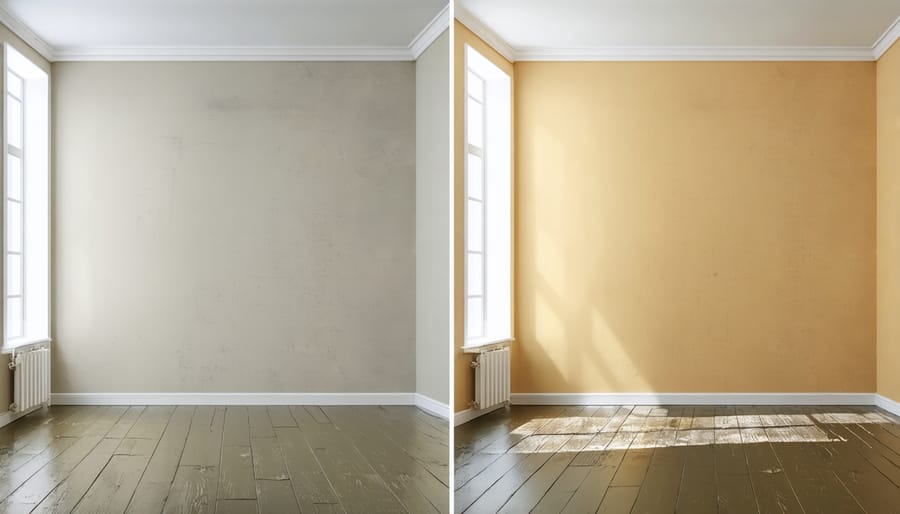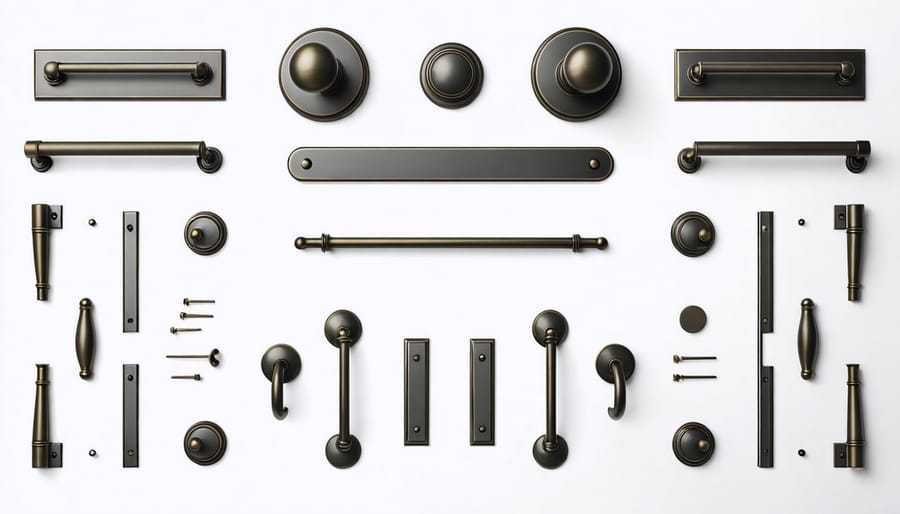Transform your living space without breaking the bank by mastering the art of strategic, cost-effective renovation. Start with a detailed room-by-room assessment, identifying areas that deliver maximum visual impact for minimal investment. Paint, hardware updates, and lighting fixtures consistently rank among the highest-ROI improvements, often returning 5-10 times their cost in perceived value. Smart homeowners leverage a mix of DIY projects, salvaged materials, and strategic professional help to stretch their renovation budgets further. Whether updating a cramped kitchen or refreshing a dated bathroom, affordable renovation isn’t about cutting corners—it’s about making informed choices that balance cost, quality, and long-term value. By focusing on timeless design elements, choosing durable materials, and tackling projects in a strategic sequence, you can achieve professional-looking results while maintaining strict budget control. Welcome to your guide to savvy, budget-conscious home transformation.
Smart Planning: The Foundation of Affordable Renovations
Setting Realistic Budget Goals
Setting a realistic renovation budget starts with a thorough assessment of your financial situation and renovation needs. Begin by determining your total available funds, including savings and any financing options you’re considering. A good rule of thumb is to set aside 20% of your budget as a contingency fund for unexpected issues that might arise during the project.
Next, create a detailed list of all desired improvements and categorize them as “must-haves” versus “nice-to-haves.” This helps prioritize spending where it matters most. Consider which upgrades will add the most value to your home while exploring eco-friendly renovation options that could save money in the long run.
Research material costs thoroughly and get multiple quotes from contractors if you’re not going the DIY route. Don’t forget to factor in often-overlooked expenses like permits, delivery fees, and temporary housing if needed. Breaking down your budget into specific categories (materials, labor, fixtures, etc.) helps maintain better control over spending.
Remember that it’s better to complete fewer projects well than to spread your budget too thin across many half-finished improvements. Focus on quality where it counts, and consider tackling projects in phases if necessary to maintain financial comfort.
Timing Your Renovation Right
Timing your renovation project strategically can lead to significant savings and better service availability. The off-season for contractors typically falls between November and March, when outdoor projects slow down and many professionals offer competitive rates to maintain steady work. You’ll often find better deals on materials during this period too, as suppliers clear inventory for the new year.
Major retailers tend to discount home improvement materials during specific times: appliances go on sale during holiday weekends, flooring deals emerge in December and January, and paint prices drop during winter months. Keep an eye out for end-of-season clearances, particularly in late summer and early winter.
For outdoor projects, plan ahead by booking contractors in late winter for spring work, or in mid-summer for fall projects. This approach gives you negotiating power and ensures you’re not competing with the rush of homeowners all vying for contractor attention during peak seasons.
Consider breaking your renovation into phases to take advantage of different seasonal deals throughout the year. This strategy not only helps spread out costs but also allows you to capitalize on the best timing for each aspect of your renovation.

High-Impact, Low-Cost Updates
Paint Power
Never underestimate the transformative power of paint – it’s your most budget-friendly secret weapon for renovation. A well-executed paint job can completely reinvent a space for just a fraction of the cost of other upgrades. Start by selecting quality paint that matches your space’s purpose; kitchens and bathrooms benefit from moisture-resistant formulas, while living areas can use standard matte or eggshell finishes.
Consider using strategic painting techniques to maximize impact. Color blocking can create visual interest and define zones in open spaces, while an accent wall can become a striking focal point. For small rooms, painting the ceiling the same color as the walls can make the space feel larger, while darker colors on the ceiling can add unexpected drama to larger rooms.
Don’t forget about proper preparation – clean walls, repair holes, and use painter’s tape for crisp lines. For best results, apply two coats and use quality brushes and rollers. Creative techniques like color washing or stenciling can add texture and personality without breaking the bank. Remember, even painting just your trim or door frames can refresh your entire space’s appearance.
Hardware and Fixture Updates
One of the most cost-effective ways to transform your space is by updating hardware and fixtures. Start with cabinet handles and drawer pulls – these small changes can instantly modernize your kitchen or bathroom for under $100. Look for multi-packs at home improvement stores to save even more.
Light fixtures are another game-changer. Replace dated overhead lights with contemporary options, or add modern sconces to brighten dark corners. Don’t forget about switch plates and outlet covers – fresh white ones or decorative designs can elevate your walls for just a few dollars each.
In the bathroom, swapping out old faucets, towel bars, and shower heads can create a spa-like feel without breaking the bank. Choose finishes that complement each other, like brushed nickel or matte black, to create a cohesive look throughout your space.
Door hardware is often overlooked but makes a significant impact. Replace worn doorknobs with modern lever handles or update your front door’s hardware set for enhanced curb appeal. Remember to keep the style consistent with your home’s overall aesthetic for the best results.

Lighting Transformations
Transforming your home’s lighting doesn’t have to break the bank. By implementing smart energy-efficient lighting solutions, you can create dramatic changes while keeping costs low. Start by swapping old fixtures with modern LED alternatives, which not only reduce energy bills but also provide better illumination. Consider adding dimmer switches to existing fixtures – they’re inexpensive but offer incredible versatility in setting the perfect mood.
Get creative with lamp placement and layered lighting. Mix floor lamps, table lamps, and wall sconces to create depth and ambiance without major electrical work. Thrift stores and flea markets often hide lighting gems that just need a fresh coat of spray paint to look high-end. Don’t forget the power of mirrors strategically placed to amplify natural light – they’re an affordable way to make spaces feel brighter and larger.
For an instant update, simply cleaning windows and replacing heavy curtains with sheer fabrics can dramatically improve natural light flow. These small changes can make a big impact on your home’s atmosphere without demanding a significant investment.
DIY Backsplash and Tile Work
Transform your kitchen or bathroom with a DIY backsplash project that won’t break the bank. Peel-and-stick tiles offer an excellent entry point for beginners, providing a modern look without the commitment of traditional tiling. These user-friendly options come in various styles, from subway tile patterns to intricate mosaics, and can be installed in just a few hours.
For those ready to tackle traditional tiling, start with smaller areas to build confidence. Purchase tiles during seasonal sales or consider buying end-of-lot materials for significant savings. Pro tip: calculate your square footage needs and add 10% for cuts and mistakes. Basic ceramic tiles can cost as little as $2 per square foot, making them a budget-friendly choice for first-time DIYers.
Essential tools include a level, tile spacers, and a quality tile cutter – many hardware stores rent these tools for one-time projects. Consider using pre-mixed grout to simplify the process and ensure consistent results. Before starting, thoroughly clean and prep your surfaces, and always work in small sections to maintain control over your project.
Remember to seal grout lines once complete to protect your investment and ensure longevity. With patience and attention to detail, you can achieve professional-looking results at a fraction of the cost.
Money-Saving Renovation Strategies

Salvage and Upcycling Ideas
One person’s trash can truly be another’s treasure when it comes to home renovation. By embracing sustainable material choices through salvaging and upcycling, you can create unique, character-filled spaces while keeping costs down.
Start by exploring local architectural salvage yards, which often house gems like vintage doors, antique hardware, and period-appropriate fixtures at fraction of retail prices. Don’t overlook online marketplace platforms and community groups where people frequently give away or sell renovation leftovers.
Consider these creative upcycling ideas:
– Transform old wooden pallets into statement wall features or rustic shelving
– Repurpose vintage suitcases as unique side tables
– Convert mason jars into charming bathroom organizers or light fixtures
– Use reclaimed wood for floating shelves or kitchen islands
– Turn old windows into decorative mirrors or photo frames
When sourcing salvaged materials, always inspect items thoroughly for damage, pests, or hazardous materials like lead paint. Clean everything properly before bringing it home, and factor in any restoration work needed.
Pro tip: Build relationships with local contractors who might alert you when they’re demolishing properties – this can be a goldmine for scoring quality materials that would otherwise end up in landfills.
Remember to keep an open mind and look beyond an item’s original purpose. That old ladder could become a towel rack, while vintage doors might make perfect headboards. With some creativity and elbow grease, salvaged materials can add both character and savings to your renovation project.
Strategic DIY vs. Professional Work
Making smart decisions about what to DIY and what to leave to professionals can significantly impact your renovation budget and results. The key is honestly assessing your skills, available time, and the complexity of each task.
Generally, you can tackle cosmetic updates like painting, wallpapering, cabinet hardware replacement, and basic landscaping yourself. These projects require minimal specialized knowledge and pose little risk if mistakes occur. Simple tile work, basic carpentry like installing baseboards, and furniture assembly are also typically safe DIY territory.
However, certain projects should always be left to professionals. These include electrical work, major plumbing modifications, structural changes, and anything requiring permits. The potential risks to safety and property value far outweigh any potential savings. HVAC work, roof repairs, and gas line modifications also fall firmly in the professional category.
Consider these factors when deciding:
– Safety risks involved
– Tools required and their costs
– Time commitment needed
– Skill level and experience required
– Potential impact on home value
– Cost difference between DIY and professional work
A smart approach is to combine DIY and professional work strategically. For instance, you might hire professionals for the complex bathroom plumbing but handle the tile installation yourself. Or have electricians install new wiring but do the painting and fixture installation on your own.
Remember that learning new DIY skills takes time. Start with smaller projects to build confidence and expertise. Don’t hesitate to consult YouTube tutorials, home improvement forums, and local workshops to expand your renovation capabilities.
Smart Shopping for Materials
Where to Find the Best Deals
Finding great deals on renovation materials doesn’t have to be a treasure hunt. Start by exploring your local ReStore (Habitat for Humanity’s retail outlets), where you’ll find deeply discounted building materials, fixtures, and furniture. These stores often carry both new and gently used items at fraction of retail prices.
Don’t overlook architectural salvage yards – they’re goldmines for unique, character-rich pieces like vintage doors, windows, and hardware. Many of these items are not only cheaper but also include cost-effective green materials that give your renovation an eco-friendly edge.
Online marketplaces like Facebook Marketplace and Craigslist frequently feature building materials from contractors’ surplus or homeowners’ leftover supplies. Subscribe to email newsletters from big box stores to catch seasonal sales and clearance events. Pro tip: visit these stores early January and late August when they typically clear out inventory.
Consider joining local buy-nothing groups or renovation-focused social media communities where members often share or sell materials at fantastic prices. Also, check out floor model sales at kitchen and bath showrooms – these display items usually come with significant discounts while still being in excellent condition.
Quality vs. Cost Trade-offs
When renovating on a budget, the key is finding the sweet spot between quality and cost. Start by identifying areas where quality matters most – typically items that affect safety, durability, or daily use. For instance, investing in quality kitchen countertops makes sense because they face constant wear and tear, while you can opt for more affordable options in less-used spaces.
Consider the “high-low” approach: splurge on one or two statement pieces while choosing budget-friendly options for everything else. For materials, look for mid-grade alternatives that offer good durability without the premium price tag. Luxury vinyl plank flooring, for example, can give you the look of hardwood at a fraction of the cost.
Don’t automatically dismiss cheaper materials – many modern budget options are surprisingly durable. However, avoid cutting corners on structural elements, waterproofing, or electrical work. These are areas where quality directly impacts safety and long-term maintenance costs.
Smart compromises might include choosing stock cabinets but upgrading the hardware, or selecting basic tiles but creating an interesting pattern with their arrangement. Remember, creative design can often compensate for modest materials.
Embarking on an affordable renovation journey doesn’t mean compromising on style or quality. By following smart planning strategies, embracing DIY projects, and making calculated decisions about where to spend and save, you can transform your space without breaking the bank. Remember that successful budget-friendly renovations are all about balance – knowing when to splurge on essential items and when to find creative alternatives for others.
Start small with manageable projects, and don’t be afraid to tackle one room at a time. Focus on high-impact changes like fresh paint, updated hardware, or refurbished furniture to make significant visual improvements without excessive costs. Take advantage of sales, second-hand finds, and seasonal discounts to stretch your renovation budget further.
Most importantly, trust your instincts and personal style while remaining flexible with your vision. Sometimes the most beautiful transformations come from working within constraints and thinking outside the box. With proper planning, research, and a dash of creativity, you can achieve the home of your dreams without the nightmare of overwhelming expenses. Your affordable renovation journey starts now – take that first step and watch your vision come to life!
